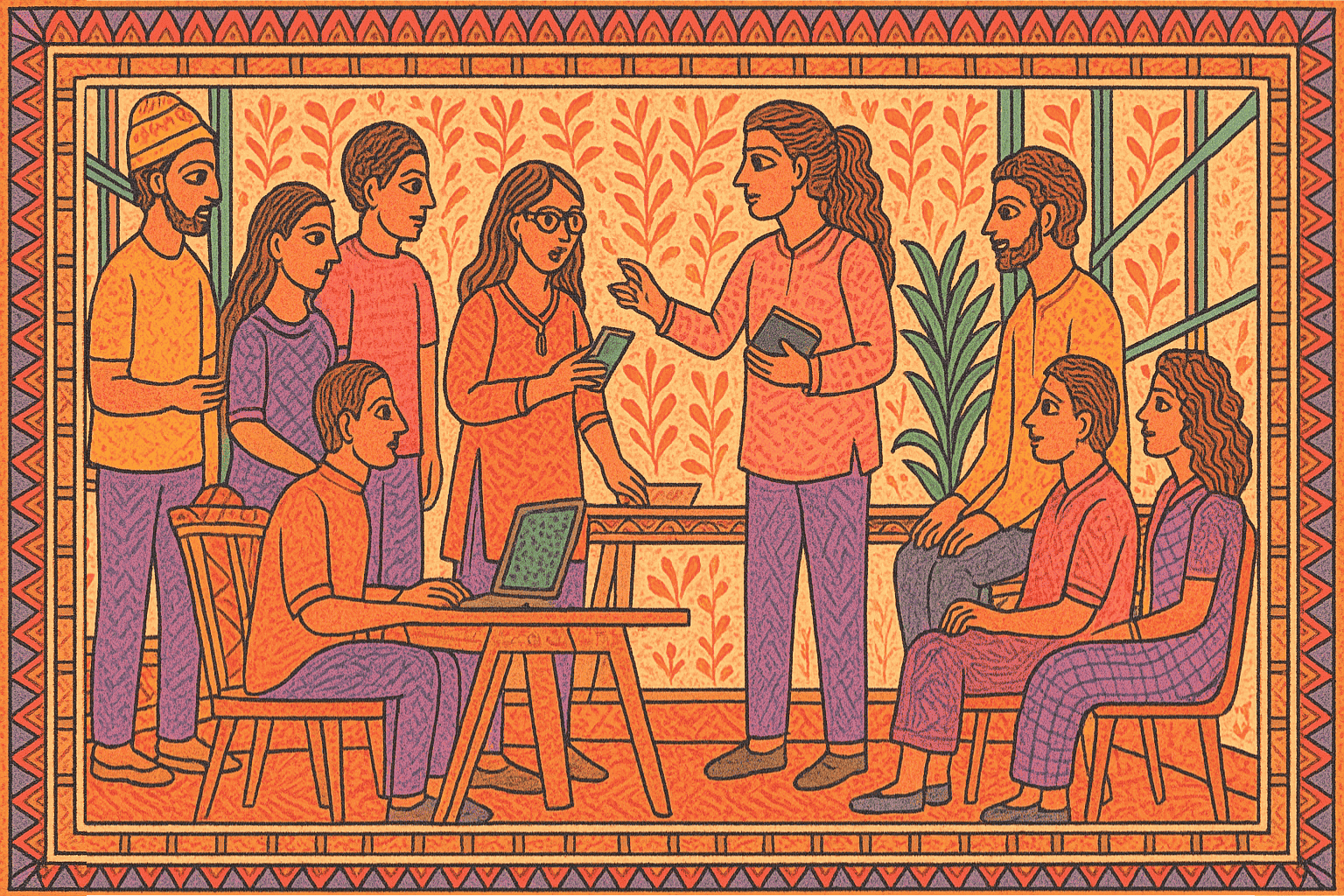TL;DR using qualitative methods for ads testing
- Ad testing helps you identify the best-performing creative elements before launch—boosting engagement, emotional resonance, and conversions.
- While A/B testing and surveys offer quantitative scale, they often miss why audiences feel a certain way. That’s where qualitative ad testing steps in.
- One-on-one interviews give you rich, emotional insights into how people perceive your ad tone, message clarity, visual impact, and relatability.
- Compared to focus groups, in-depth interviews provide undiluted, personal feedback that helps you make smarter creative decisions.
- Use interviews when you’re testing emotional messaging, premium offerings, or campaigns where nuance matters.
What is Ads Testing?
When it comes to creating effective ads, getting feedback from your target audience is crucial. While digital tools like A/B testing (or split testing) and surveys are common, one-on-one interviews offer something special: deep, personal insights that can really make a difference.
Ads testing is the process of evaluating the effectiveness of your advertisements before launching them to a broader audience. It involves experimenting with different versions of your ads to see which ones resonate most with your target market. This can include testing various elements such as headlines, images, messaging, and calls to action. The goal is to identify the version that performs best, leading to more engagement, conversions, and overall success.
Common methods of ads testing: a comparison
When should you use qualitative methods for ad testing?
Not every ad testing situation calls for large-scale numbers or A/B comparisons. Sometimes, you need to go deeper to understand emotional nuance, motivations, or unexpected reactions that data alone can’t capture. That’s where qualitative ad testing methods, like one-on-one interviews, come in.
Here are the best scenarios to use qualitative methods for ad testing:
🎯When you're testing emotional messaging
If your campaign relies on tone, storytelling, or empathy—like a brand anthem, healthcare message, or purpose-driven initiative—interviews help uncover how the ad makes people feel, not just what they remember.
🆕When you're introducing a new product or category
With unfamiliar offerings, early qualitative feedback can reveal confusion, assumptions, or missing context. This is crucial for refining your ad before scaling it.
👥When your target audience is niche or hard to quantify
For B2B campaigns, luxury buyers, or regional micro-markets, qualitative interviews can help you build audience empathy even with small sample sizes.
🛠When you're still developing the creative concept
Before final visuals or copy are locked in, qualitative methods like one-on-one interviews give you directional insight into what language, tone, and themes resonate most, saving time and production costs later.
🚩When A/B testing shows mixed or inconclusive results
If your quantitative data says "both versions perform the same," qualitative research helps explain why and gives clarity on which direction to pursue.
Why one-on-one interviews matter
1. Rich, detailed feedback
Unlike surveys, where responses are often limited to pre-set options, interviews allow for open-ended conversations. This means you get to hear not just what people think, but why they think it. This level of detail can help you understand your audience's true feelings about your ad concepts.
2. Real-time reactions
During an interview, you can gauge reactions as they happen. If something in your ad sparks a strong response—positive or negative—you can immediately dig deeper to understand the reasons behind it. This helps you refine your ad in ways that other testing methods might miss.
3. Build trust
People are more likely to open up when they feel heard. One-on-one interviews create a space where participants feel comfortable sharing their honest opinions, leading to more authentic feedback that you can use to fine-tune your messaging.
A quick example
Imagine you’re testing a new ad for a wellness product. You’ve got the data from your surveys and split testing, and it looks promising. But something’s missing. In one-on-one interviews, you learn that while people like the product, they find the tone of the ad too clinical. They’re looking for something warmer and more relatable. Armed with this insight, you tweak the ad’s messaging, making it feel more personal and inviting. The result? A stronger connection with your audience and better overall performance.
Focus Groups vs. In-Depth Interviews
Both focus groups and in-depth interviews are valuable methods for gathering feedback, but they serve different purposes and offer distinct advantages.
- Focus groups: These involve a moderated discussion with a small group of participants. They’re great for generating a range of perspectives quickly and observing group dynamics. You can see how opinions evolve in real-time and how participants influence each other. However, focus groups may sometimes lead to dominant voices overshadowing others, and individual opinions can be less detailed.
Check out the pros and cons of focus group discussions before you make your decision.
- In-depth interviews: These are one-on-one sessions that dive deeply into an individual’s thoughts and feelings. They offer a more intimate setting, allowing for detailed and nuanced feedback. You can explore responses more thoroughly and tailor the conversation to each participant’s unique perspective. This method is particularly useful for understanding personal motivations and uncovering subtle insights that might be missed in a group setting.
If you're new to qualitative research, here's a helpful guide for navigating your first participant interview.
How to run effective one-on-one interviews for ad testing
- Recruit the right participants – match demographics and behaviors with your target audience
- Prepare stimuli – multiple ad versions, scripts, visuals
- Set clear goals – clarify what you’re testing (e.g., tone, CTA clarity)
- Ask open-ended questions – e.g., “What caught your attention first?”
- Probe emotional reactions – e.g., “How did this make you feel?”
- Record & transcribe – for later analysis
- Analyze systematically – tag themes, sentiment, and recurring insights
And remember: during interviews, it’s not just what you ask, it’s how you ask. Building rapport goes a long way in getting authentic responses.
Can AI help with one-on-one interview analysis?
Absolutely. AI is transforming how researchers and marketers analyze qualitative interviews—by cutting down the time it takes to move from raw conversation to usable insight.
Traditionally, analyzing one-on-one interviews involved hours of listening, note-taking, and manually tagging data to uncover recurring themes. But AI has changed that.
Check out the top tools for research analysis.
Here’s how AI improves interview analysis:
- Automatic transcription & sentiment tagging: Tools like Dovetail offer fast transcriptions and sentiment analysis
- Smart summaries and pre-built insight templates: Instead of requiring manual tagging or custom coding, tools like Poocho Studio use pre-defined templates to automatically sort the raw data into themes—whether you're testing emotional tone, clarity of message, or brand recall. This ensures consistency and reduces analyst bias.
- Video-stamped highlights: AI can link key quotes and insights back to exact video timestamps, helping you build presentations and highlight reels without rewatching hours of footage.
The result? Faster turnaround, less grunt work, and more time for strategy and creative iteration.
While AI doesn’t replace human intuition, it significantly reduces the operational drag of qualitative research—making one-on-one interviews more scalable and repeatable for ad testing.
Bonus checklist: Things to consider before hitting the ‘publish’ button on your ad
Before sending your next ad live, ask:
- Have you tested multiple ad concepts?
- Have you spoken to real members of your target audience?
- Did the interviewees emotionally connect with your message?
- Did you discover the “why” behind each reaction?
Conclusion
One-on-one interviews are a powerful tool in your ad testing toolkit. They provide insights that other methods can’t, helping you craft ads that resonate on a deeper level. While focus groups can offer valuable group dynamics and a range of perspectives, in-depth interviews allow for a more detailed exploration of individual opinions. So, the next time you’re working on an ad campaign, consider setting up a few interviews and you might just uncover the key to your next big success.
FAQs for qualitative ads testing
What is ad testing and why is it important?
Ad testing is the process of evaluating different ad concepts, formats, or messages before launching them to a wider audience. It helps brands identify which creative elements drive engagement, emotional connection, and conversions—ensuring better performance and ROI.
How are one-on-one interviews used in ad testing?
One-on-one interviews are a qualitative ad testing method that helps uncover the why behind user reactions. They allow researchers to explore emotional responses, message clarity, and creative resonance in depth—insights that A/B testing and surveys often miss.
How many interviews are enough for ad testing?
For directional feedback, 5–7 interviews can reveal early patterns. For more robust insight, especially when refining creative strategy, 10–15 in-depth interviews provide better saturation and confidence.
What’s the difference between ad concept testing and ad performance testing?
Ad concept testing happens pre-launch to evaluate messaging, visuals, and positioning. Performance testing occurs post-launch, measuring live metrics like click-through rates, conversions, and recall.
Can AI help with analyzing interview feedback?
Yes. AI tools like Poocho Studio streamline qualitative ad testing by transcribing interviews, automatically tagging responses into pre-set themes using insight templates, and generating time-stamped summaries. This makes one-on-one analysis faster, scalable, and consistent—without manual tagging.
What tools can support one-on-one interview-based ad testing?
Platforms like Poocho provide end-to-end support for ad testing interviews—from participant recruitment and interview hosting to automated analysis and insight delivery—tailored for creative and brand teams.





.png)



